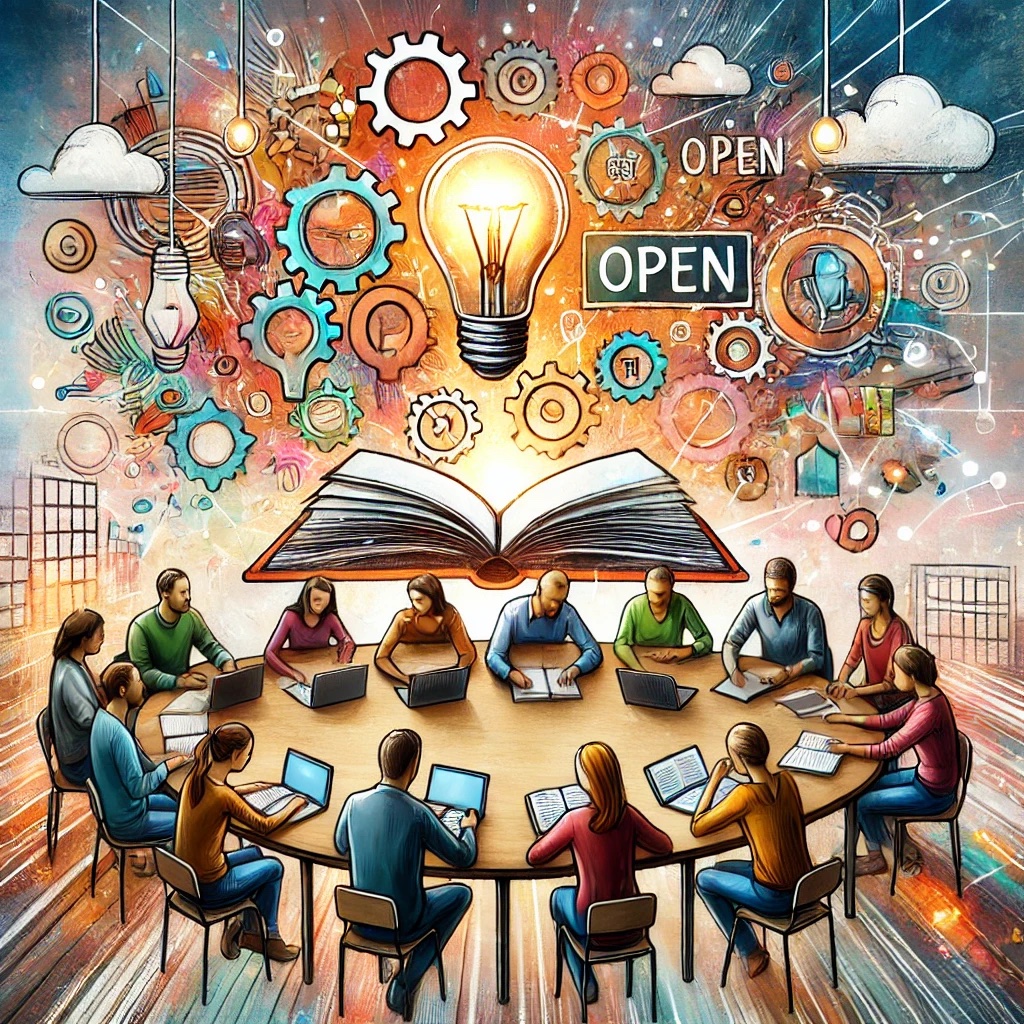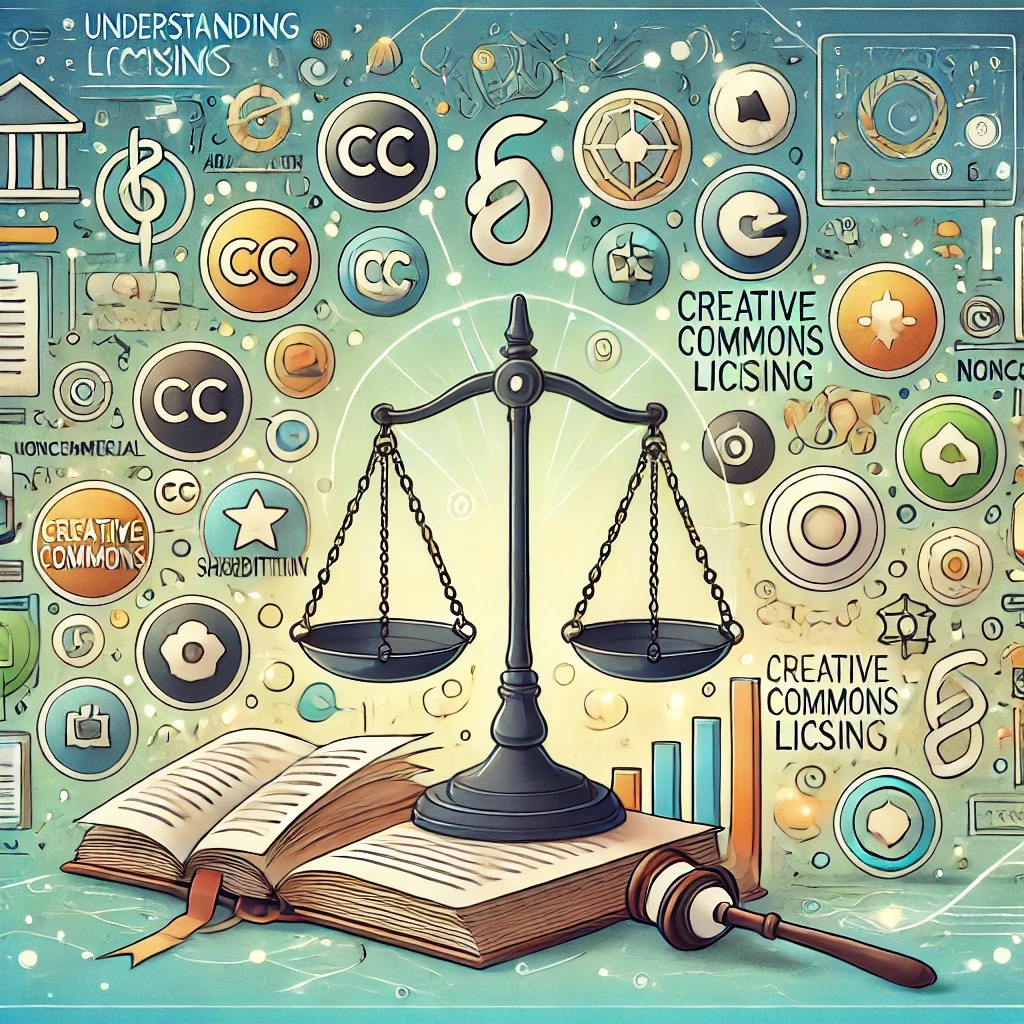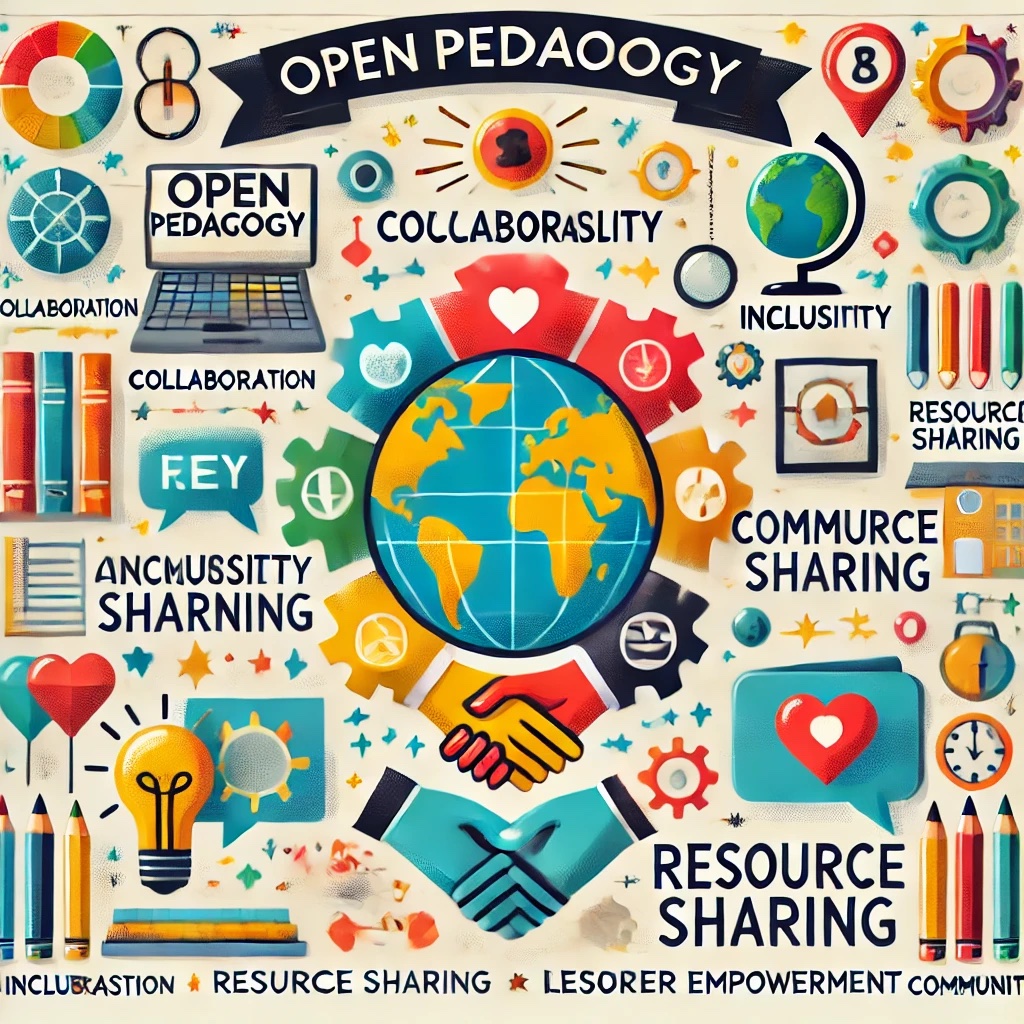What is Open Pedagogy?
Open Pedagogy, also known as Open Educational Practices (OEP), involves utilizing open educational resources (OER) to enhance learning and facilitate the sharing of teaching methods with the goal of improving education/ training (BCcampus OpenEd Resources, n.d.).. This system tries to establish a collaborative learning environment by motivating students to be a part of the teaching process (Open pedagogy, n.d.). All in all, it aims to promote the co-creation of knowledge. Listed below are the key differences between Open Pedagogy and traditional teaching methods:
- Mutual Contribution: In traditional methods, the instructor is often seen as the main person who is in charge of all learning and teaching (Bates & here, 2019). In Open Pedagogy, however, it promotes collaboration, where students are given a voice in shaping the content and approaches of their learning.
- Sense of Community: With traditional teaching, collaboration among students is heavily emphasized. Whereas in Open Pedagogy, collaboration is encouraged between students as well as instructors. This creates a learning community that values diverse perspectives (III et al., 2019).
- Feedback: Traditional learning typically have rigid assessment structures for feedback. Open Pedagogy recognizes that feedback is crucial for continuous improvement as it allows students and teachers to reflect on their work to improve learning for everyone.

Evidently, from the above list, open pedagogy and traditional learning have differences. In one study it is found that a total of 53% of people found open pedagogy had greater educational value than the traditional learning mechanisms (UMGC Library, n.d.). I feel that Open pedagogy can empower both students and educators in creating and sharing knowledge in many ways. Firstly, it can lead to blogging, where it encourages students to share their thoughts or make reflections. I feel that this can help make knowledge sharing easier and make students and educators work together to collaborate on ideas and feedback. Also, instructors could facilitate some sort of Wiki page that allows students to create/edit content and course topics. A Wiki page could make students become active contributors to their learning environment, which could potentially make their learning more meaningful.
The Role and Impact of OER
At the start of this blog post, I briefly mentioned Open Educational Resources (OER). In simple terms, OER’s are educational resources that have an open-copyright license. These type of resources can transform the educational landscape by providing high-quality materials for students/instructors that are easily accessible. I believe that incorporating OER’s in ones own learning or teaching can provide great advantages. One of the main advantages of OER’s is due to the potential cost savings. Below are a few other advantages that OER’s provide:
- Alumni Ties: OER’S provide ways for graduates to stay connected to the institution and continue with a program for lifelong learning.
- Enhancement of Course Content: OER’s can provide alternate mechanisms of distributing content (i.e., videos), making it easier for students to understand the information taught.
- Easy Modification: OER’s can be easily revised, modified, or reorganized to better support the courses learning objectives. Other types of resources (ie., all rights reserved content) may be challenging to modify.

The concept of OER contributes to making education more equitable and accessible by supporting diverse populations. Due to most OER’s ability to be easily modifiable, they can be created in a way that meets the needs of diverse people. Additionally, OER’s are more affordable compared to traditional methods as it eliminated the financial burden of purchasing textbooks of materials. This makes it so people of various financial status’s can afford education.
Global Trends on OER
The global popularity of OER has been rising rapidly, as they effectively address the issue of limited access to quality educational resources (Berdahl, 2023). Additionally, many countries around the world are focusing on incorporating OER’s into their system to help reduce the costs that students have to bare. According to BC Campus, it was estimated that approximately $35M have been saved since 2012 from open textbooks (Stacey, 2007). These numbers alone are enough to make institutions worldwide push toward OER’s. Furthermore, other countries around the world are trying to establish national techniques to increase the funding to encourage the creation/distribution of open resources. One such example is the UK’s Open University, an institution that encourages the distribution of open resources to lower the costs and to improve educational equity to students (The Open University, n.d.).
The challenges and opportunities that comes with adjusting with these trends includes sustainability. It can be simple to provide enough funding to provide a quick start to supporting OER’s; however, to maintain these resources long-term can be tough for institutions. Thus, it is crucial they develop strategies to maintain/update such resources over time. Additionally, it is crucial that proper training is done to ensure educators are aware of OER’s. Initially, it may be challenging for instructors to get uses to these resources or integrate them into their teaching. Therefore, it is crucial institutions develop programs that can help educate instructors about these OER’s.
Understanding Creative Commons Licensing
I believe the Creative Commons (CC) Licensing in the context of OER’s is important as it ensures legal clarity. Whenever someone uses a CC license, it clearly outlines what other people can do with their work. Thus, I believe that this can significantly reduce the risk of copyright issues as the clear guidelines provide enough information on how the material can be used in a proper manner. Another important aspect of CC licensing is that it often allows people to modify the content. This added accessibility allows people to tailor the material according to their needs, which can potentially save time and money. Evidently, difference types of licenses have different requirements. Some provide clear permissions on what one can/cannot do and some require attributions. By understanding these requirements, people can make informed decisions about how to use, share, and adapt educational resources.
Evidently, there are many different types of CC types. Depending on the type, I can integrate that type into my work. Listed below are some of the popular Creative Common Licenses (Creative Commons, 2023):
- CC BY: Allow users to distribute, remix, adapt, and build upon the material in any medium or format as long as proper attribution is given the creator. It also allows commercial use.
- CC BY-SA: Similar to CC BY, but some differences. For example, if you remix, adapt or build upon the material, the user must license the modified material understand identical terms.
- CC BY-NC: Similar to CC BY, however, this is only for non-commercial purposes only.

If I choose to use CC resources, I will make sure to use the licensing that matches my goals. Evidently, if I want to use a resource for commercial use, I would not use the CC BY-NC license, but would use the CC BY licenses instead. On the flip side, if I would like to share my own work to others, I would definitely utilize the CC licensing so that my work gets properly recognized and acknowledged. If I would not mind others to use my work commercially, I would select the CC BY license. If I do not want my content to be used commercially, I would select the CC BY-NC license instead. All in all, I deeply value that importance of CC licensing as it allows people to share material, making it easier to modify existing material so that it caters towards their own goals. I would definitely recommend students to create material that can be under the CC license so their work can be built upon by others in the community.
Attributes of Open Pedagogy

There are many key attributes that are part of Open Pedagogy which makes it different from traditional teaching. One attribute that I find important is Collaboration. In my experience, collaboration allows easier formation of ideas and solutions. This particular attribute can be implemented in my own educational practices by creating projects that involve group work. Group projects can enhance critical thinking and is often seen effective in motivating students and encouraging active learning (Centre for Teaching Excellence, 2024). Another attribute is Transparency. I can incorporate transparency into my system by providing clear instructions and communicating the learning objectives in a way that makes it easy for the students to understand. By being transparent in my teaching, it can make students feel more informed and makes them truly understand what is expected from them. The last attribute I will highlight is the usage of OER’s. This attribute can be easily implemented into my teaching by using resources that everyone can access, no matter one’s financial status.Additionally, I can also encourage students to create projects that are Creative Common Licensed so their material can be used and further modified by others. All in all, the attributes I have discussed contribute to a more inclusive and participatory learning environment by emphasizing engagement, providing accessible resources, and making students take ownership of their own learning.
I have discussed about 3 popular attributes of Open Pedagogy above.. The video below does an excellent job providing a quick summary of the 8 other attributes of Open Pedagogy, which I believe is worth watching. It highlights practical examples and provide more information about how these attributes can increase collaborative learning experiences in educational settings.
References
About CC licenses. Creative Commons. (2023, September 28). https://creativecommons.org/share-your-work/cclicenses/
Bates, T., & here, P. enter your name. (2019, September 26). Chapter 11.4 Open Pedagogy: Tony Bates. Tony Bates |. https://www.tonybates.ca/2019/09/26/chapter-11-4-open-pedagogy/
Berdahl, L. (2023, July 19). Why you should start using Open Educational Resources in your teaching. University Affairs. https://universityaffairs.ca/career-advice/the-skills-agenda/be-open-to-using-open-educational-resources-in-your-teaching/#:~:text=According%20to%20BC%20Campus%2C%20open,have%20a%20reduced%20environmental%20impact.
III, J. H., Wiley, D., Chaffee, R., Darrow, J., Guilmett, J., Harper, S., & Hilton, B. (2019, November 30). Student perceptions of open pedagogy: An exploratory study. Open Praxis. https://openpraxis.org/articles/10.5944/openpraxis.11.3.973
Implementing Group work in The classroom: Centre for teaching excellence. Centre for Teaching Excellence | University of Waterloo. (2024a, September 18). https://uwaterloo.ca/centre-for-teaching-excellence/catalogs/tip-sheets/implementing-group-work-classroom#:~:text=Group%20work%20can%20be%20an,like%20a%20waste%20of%20time.
Implementing Group work in The classroom: Centre for teaching excellence. Centre for Teaching Excellence | University of Waterloo. (2024b, September 18). https://uwaterloo.ca/centre-for-teaching-excellence/catalogs/tip-sheets/implementing-group-work-classroom#:~:text=Group%20work%20can%20be%20an,like%20a%20waste%20of%20time.
Open pedagogy. Teaching and Learning Centre. (n.d.). https://tlc.ontariotechu.ca/teaching/open-educational-practices/open-pedagogy.php
The Open University. Open Educational Resources at The Open University | Open University. (n.d.). https://www5.open.ac.uk/open-educational-resources/
Stacey, P. (2007, April 4). View of open educational resources in a global context: First Monday. View of Open educational resources in a global context | First Monday. https://firstmonday.org/ojs/index.php/fm/article/view/1769/1649
UMGC library: Open Educational Resources: Pros and Cons. Pros and Cons – Open Educational Resources – UMGC Library at University of Maryland Global Campus. (n.d.). https://libguides.umgc.edu/c.php?g=23404&p=138771
What is open pedagogy?. BCcampus OpenEd Resources. (n.d.). https://open.bccampus.ca/what-is-open-education/what-is-open-pedagogy/#:~:text=Open%20pedagogy%2C%20also%20known%20as,%2C%20professional%2C%20and%20individual%20level.
